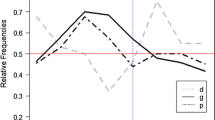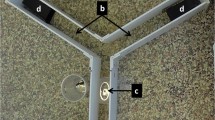Abstract.
The purpose of this study was to determine the effects of early experience (rearing conditions) on the central nervous system (CNS) and behavior of spiderlings of Hogna carolinensis (Lycosidae). We were interested in whether or not spiderlings that were allowed to remain in contact with their maternal parent and siblings (enriched condition, EC) would exhibit differences in CNS development or subsequent behavior when compared with those reared in isolation (impoverished condition, IC). Spiderlings emerged from their egg sacs and climbed onto the dorsal surface of their mother's abdomen where they remained until their yolk supply was depleted (5 days). They dispersed on day 6 after emergence. We compared the ability of 16-day-old EC and IC spiderlings to capture prey in a linear runway and to learn a complex maze (spatial learning). We also compared certain aspects of CNS development (brain weight, total number of brain cells, volume of central body and protocerebral neuropil) in EC and IC spiderlings. Results indicated that EC subjects are more efficient at capturing moving prey (crickets) and exhibited improved performance (significantly fewer blind alley errors) in the maze. The volume of the protocerebral neuropil in 6-day-old EC animals increased 30% over a 5-day period after emergence as compared to IC animals of the same age. The volume of the central body of EC animals increased 34.8% over the same time period. On day 6 after emergence, the weight of the protocerebrum was significantly greater in EC versus IC subjects. There were no significant effects of rearing condition (EC vs IC) or age (1- and 6-day-old spiderlings) on the total number of nerve cells in the protocerebrum, suggesting that the difference in protocerebral weight was due primarily to differences in supporting glial tissues and neuropil matrix. In conclusion, the data suggest that early contact with the maternal parent and siblings is of vital importance to CNS development in lycosid spiderlings and can influence the capacity for spatial learning as well as the ability to capture prey.
Similar content being viewed by others
Author information
Authors and Affiliations
Additional information
Electronic Publication
Rights and permissions
About this article
Cite this article
Punzo, F., Ludwig, L. Contact with maternal parent and siblings affects hunting behavior, learning, and central nervous system development in spiderlings of Hogna carolinensis (Araeneae: Lycosidae). Anim Cogn 5, 63–70 (2002). https://doi.org/10.1007/s10071-002-0128-9
Received:
Revised:
Accepted:
Issue Date:
DOI: https://doi.org/10.1007/s10071-002-0128-9




